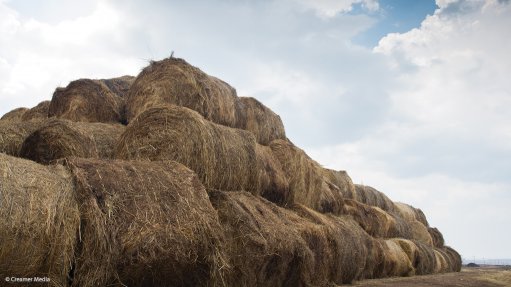
Photo by: Duane Daws
Despite tough market conditions, such as the drought and volatile currency exchange rates, JSE-listed Rolfes Group has achieved a 22.7% year-on-year increase in its headline earnings a share to 28.3c apiece for the six months ended December 31.
The company also achieved a 6.2% year-on-year rise in turnover to R626-million, while its operating profit was up 9.6% year-on-year to R60-million.
Speaking to Engineering News Online in a telephone interview, Rolfes CEO Lizette Lynch said this growth came on the back of a strong performance from the group’s food division, while the other divisions also showed strong growth.
“If you extract the noncore trading businesses that were sold during the six months, the group itself, grew very well, with 20% growth in operating margin. Our agricultural division grew by 14%, while the industrials and chemicals businesses also did well,” she pointed out.
DIVISIONAL PERFORMANCE
The group believed it benefited from its diversified product range, industry spread and geographical positioning during challenging economic times.
Despite a 26.9% decrease in its agricultural division’s revenue, to R142.6-million, owing to severe drought conditions in the region, the group deemed the performance satisfactory.
Gross profit margins increased to 30.4%, owing to the effect of the lower-margin trading businesses disposed of effective July 1, 2015, which contributed R53.2-million in revenue for the period to December.
Operating costs also decreased to R18.5-million, from R27.7-million, in the comparative period, owing to the disposal of trading businesses and certain cost savings brought about through effective restructuring initiatives.
Meanwhile, Rolfes Chemicals’ revenue decreased by 11.6% to R185.7-million, but its gross profit margins increased to 20.8%, mainly owing to the disposal of the lower-margin business and as a result of an increased service and product basket offering to customers. Operating margins in Rolfes Chemicals improved to 9.6%.
Lynch added that the global drive to discontinue lead-chrome containing products resulted in major customers advising Rolfes Colour Pigments International of their intention to cease using lead-chrome containing products, specifically in the manufacture of paint, which necessitated further business restructuring.
EXPANDING ITS FOOTPRINT
Rolfes was focusing on further expanding its agricultural sector and food sector’s footprint in the Western Cape, KwaZulu-Natal and further into Africa.
Lynch explained that the company’s acquisition of Bragan Chemicals, concluded in October, had leveraged the group to “grow aggressively” in the region, despite it not being on Rolfes’ agenda.
“We have expanded the logistics capabilities, as we believe the Western Cape market is one of the larger growth areas to target,” she noted.
She said that, in terms of expanding across the border, Rolfes would target South Africa’s neighbouring countries.
This included the development of a new distribution channel for foliar feeds in Mozambique and Zambia, which Rolfes noted was performing to expectation.
Lynch noted, however, that there were some barriers to entry, such as product registration. For this reason, the group appointed technical marketing manager on the ground.
Lynch said she remained positive about the year ahead, noting that the company was geared to carry out aggressive cross-selling strategies and focusing on more acquisitions, or perhaps creating a fifth business division, focusing on pharmaceuticals.